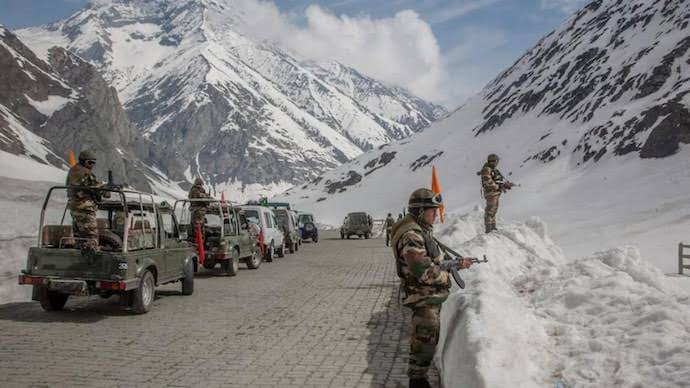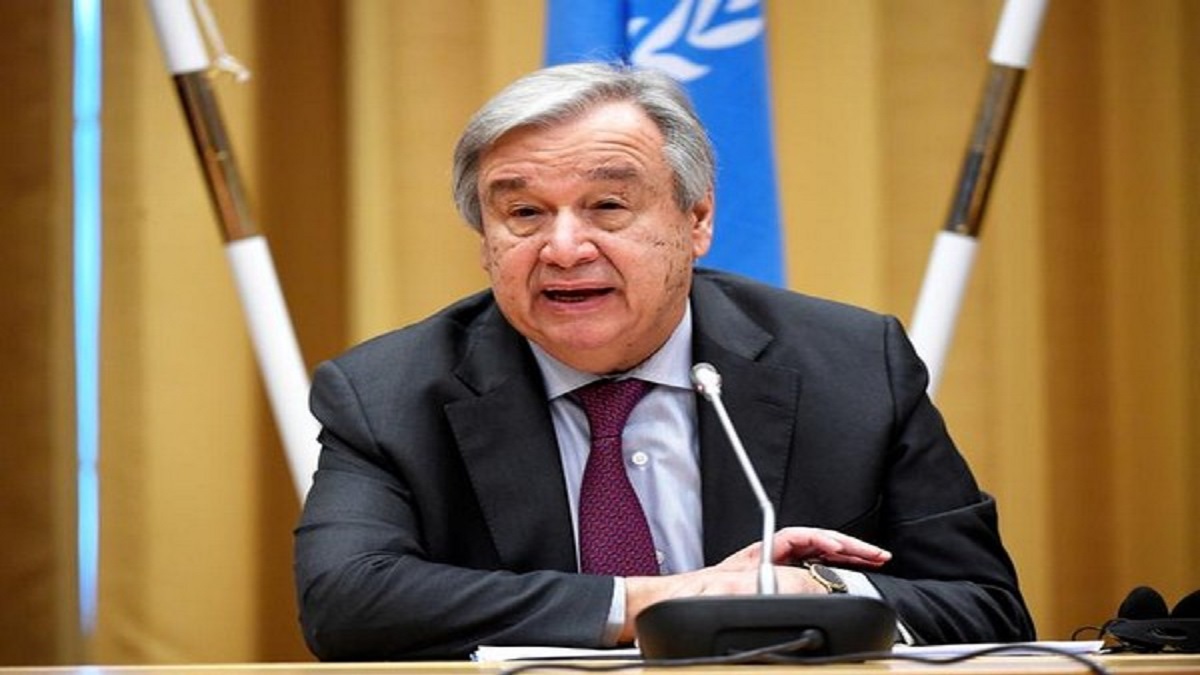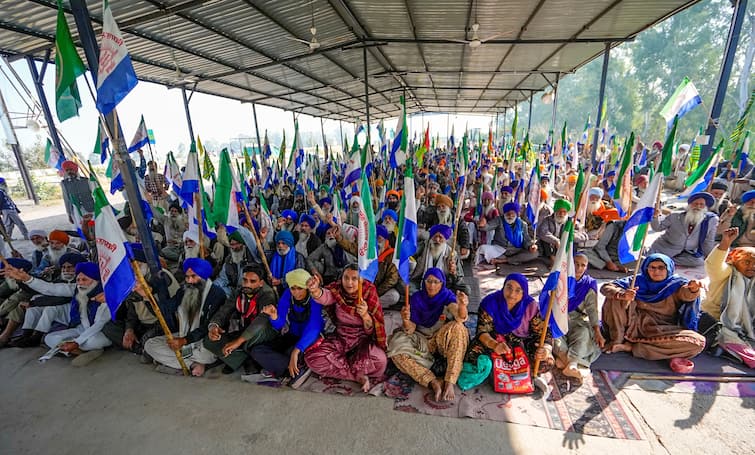
The Sino-Indian Border After Galwan
The DiplomatThe lightly armed Indian patrol, about a hundred soldiers strong and led by a senior field commander, a colonel, moved cautiously through the Galwan River Valley. The current disruption on the Sino-Indian border began in April 2020 when Indian intelligence operatives and Indo-Tibet Border Police reported heavy Chinese troop build-ups at several places across the LAC. The PLA took advantage of the Indian Army’s preoccupation with the pandemic and the Indian side was taken by surprise in late April, when large numbers of Chinese troops crossed the LAC into the Galwan and Pangong Tso areas. Beyond Galwan While the bloody clash in Galwan River Valley made that area the most famous flashpoint in this round of tensions, China’s April 2020 incursion took place at several different points: Chumar and Demchok in the “southern sector” of Ladakh; Chushul and Pangong Tso lake in the “central sector” and Galwan and Depsang in the “northern sector.” As noted above, India’s initial, flawed assessment downplayed the severity of the situation. A third PLA intrusion happened on May 17-18 at Pangong Tso lake, where Chinese troops and heavy vehicles crossed the LAC and seized traditionally unoccupied territory along the lake’s northern bank.
History of this topic

China has improved military infrastructure and training along LAC: US report
New Indian Express
India and China Reach Agreement on Border Standoff in Ladakh
ABP News
China says troops disengaged at 4 places, including Galwan Valley, after Jaishankar's '75%' statement
Hindustan Times
4 years since the Galwan clash: How China covered up deaths of PLA soldiers
Op India
Jairam Ramesh slams PM Modi over 2020 Galwan Valley clash
Deccan Chronicle
'We have mechanism to deal with...': MEA on viral video of Chinese soldiers stopping Indian herders in Ladakh
India TV News
Graziers confront Chinese soldiers in eastern Ladakh
The Hindu
Indian, Chinese troops clashed twice along LAC after 2020 Galwan Valley skirmish: Report
India TV News
3 Years After the India-China Face-Off at Galwan Valley
The Diplomat
No major escalation expected along India-China border during summer: Officials
Deccan Chronicle
US shared intel with India to repel Chinese troops? White House says…
Hindustan Times
Fully deployed India-China forces is new normal on LAC
Hindustan Times
Indo-Tibetan Border Police | India’s ‘eyes and ears’ on the China border
The Hindu
More Indian-Chinese troops clashes expected in Ladakh as Beijing…: Report
Hindustan Times
Explaining the Latest Clashes on the Sino-Indian Border
The Diplomat
Explained | The escalation on the India-China border
The Hindu
India China Hold First Talks After Arunachal Tawang Clash Agree To Maintain Security And Stability
ABP News
India increases security on border with China after tense standoff
The Independent
War of words and border clashes
The HinduIndia parades a ballistic missile dubbed the 'China killer' just days after the two countries clash at a contested border. What's going on?
ABC
Warning sign: The Hindu Editorial on a fresh India-China faceoff at Yangtse in Tawang sector of Arunachal Pradesh
The Hindu
'Nehru in 1962...': Oppn Walks Out of RS Over Debate on Indo-China Skirmish
The Quint
Amid Tawang Clash, 2021 Video of Indian Soldiers Roughing Up Chinese Troops Surfaces
News 18)
India-China clash in Tawang: UN chief calls for de-escalation in tensions along border
Firstpost
‘Incursion at LAC could be result of conspiracy between China, Pak: Former Army Chief Gen Chowdhury says India-China relation will remain tense
Op India
US reacts to India-China clash in Tawang: 'Glad both sides quickly disengaged'
Hindustan Times
India-China border clash: UN Chief Guterres calls for restoration of peace in Tawang border region
India TV News
3 Indian Army units thwarted Chinese aggression during face-off in Yangtse
India Today
Tawang sector vulnerable to frequent conflicts with Chinese PLA
Hindustan Times
Rajnath Singh tells Parliament that Army thwarted Chinese PLA attempt in Yangtse area
Deccan Chronicle
Arunachal clash: 3 Indian Army units thwarted PLA troops aggression | 10 points
Hindustan Times
Clash Between Indian, Chinese Troops Along LAC Worrying: Mayawati
News 18
Arunachal Pradesh CM Pema Khandu says Indian soldiers will give a befitting reply to anyone who tries to transgress in Indian Territory
Op India
Yangtse faceoff | India triggered clash, says Chinese Army; situation is stable, insists Foreign Ministry
The Hindu
Indian and Chinese troops clash at border ‘with spiked clubs and stun guns’
The Independent
Big Picture: Lessons from PLA Tawang incursions and China’s global ambitions
Hindustan Times
Chinese PLA in Tawang came armed with spiked clubs, taser guns and monkey fists: Reports
Op India
'Indian troops prevented Chinese PLA to change the status quo': Rajnath Singh in LS
Op India)
Tawang Clash: PLA tried to change LAC, pushed back by Indian Army, says Rajnath Singh
Firstpost
Incident at LAC will affect India-China relations: BJP MP
The Hindu
India-China Tawang skirmish sparks political slugfest: 10 latest developments
Live Mint
More Chinese soldiers injured in border clash with Indian Army: Arunachal MP
Live Mint
'Not 1962 anymore, Indian soldiers will give a befitting reply': Arunachal CM on Tawang clash
India Today
India-China face-off: Viral video allegedly shows December 9 clash near LAC in Arunachal's Tawang
India TV News
India-China troops clash: Defence Minister Rajnath Singh holds meeting with CDS, services chiefs in Delhi
India TV News
OPINION | Arunachal clash: Indian army will always give a befitting reply to intruders
India TV News
Indian, Chinese troops clash in Arunachal's Tawang sector
Hindustan Times
Arunachal clash: 300 China troops entered LAC, Indian Army hit back | 10 points
Hindustan Times
India-China Face-Off at Tawang Began As PLA Soldiers Tried to Transgress LAC: Army Officers
News 18Discover Related



)

)










)

)









)





)







)



